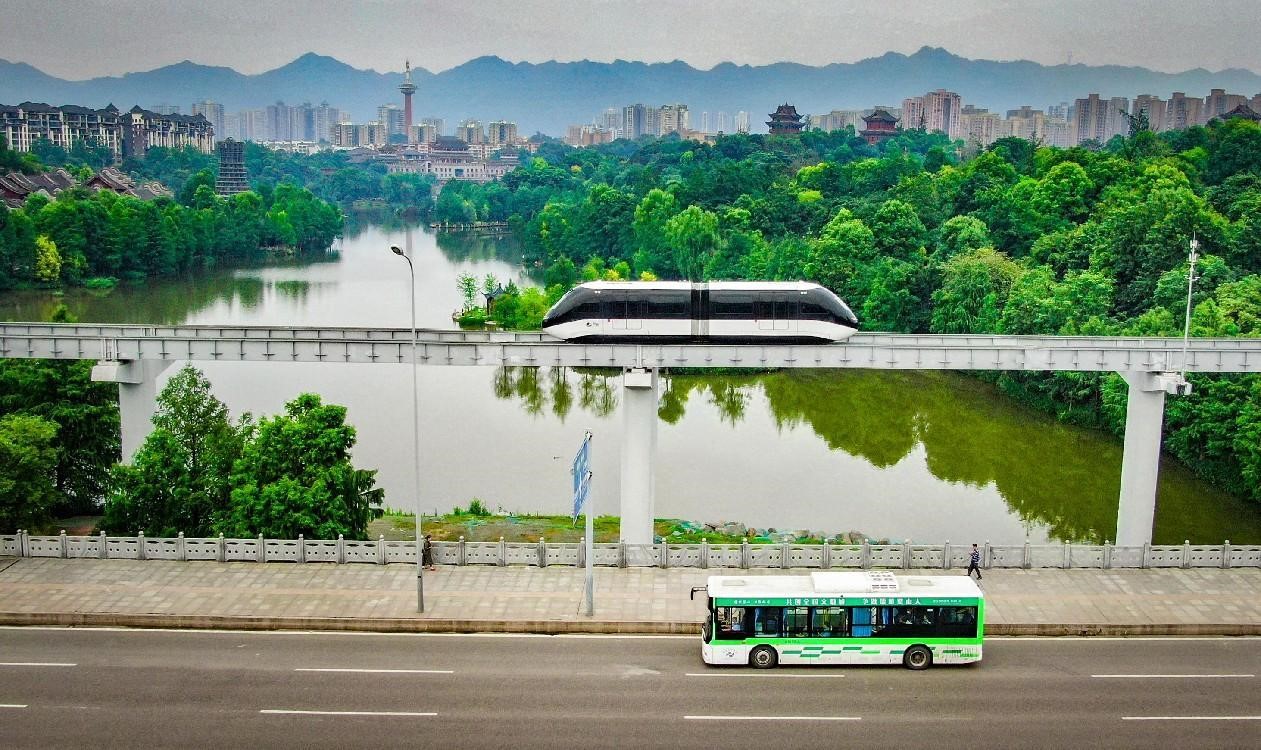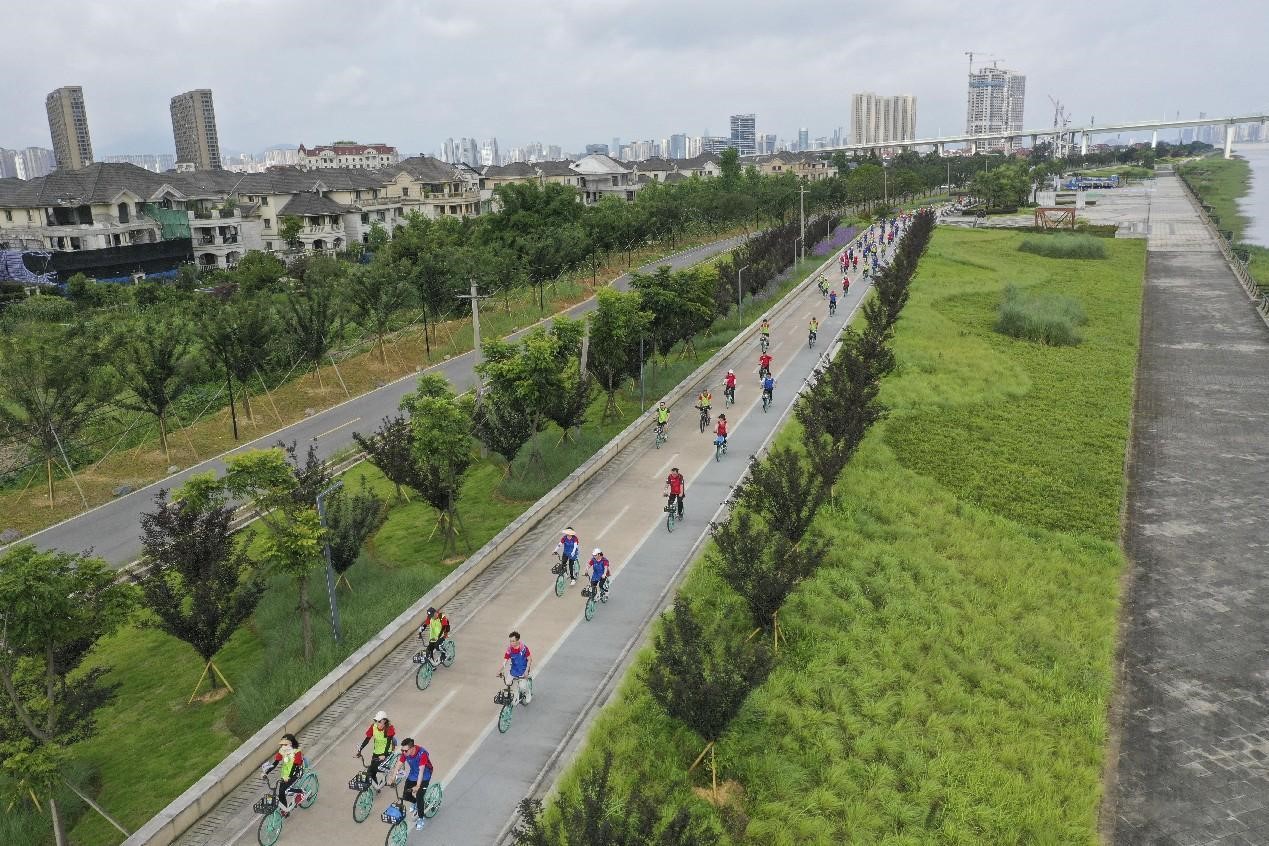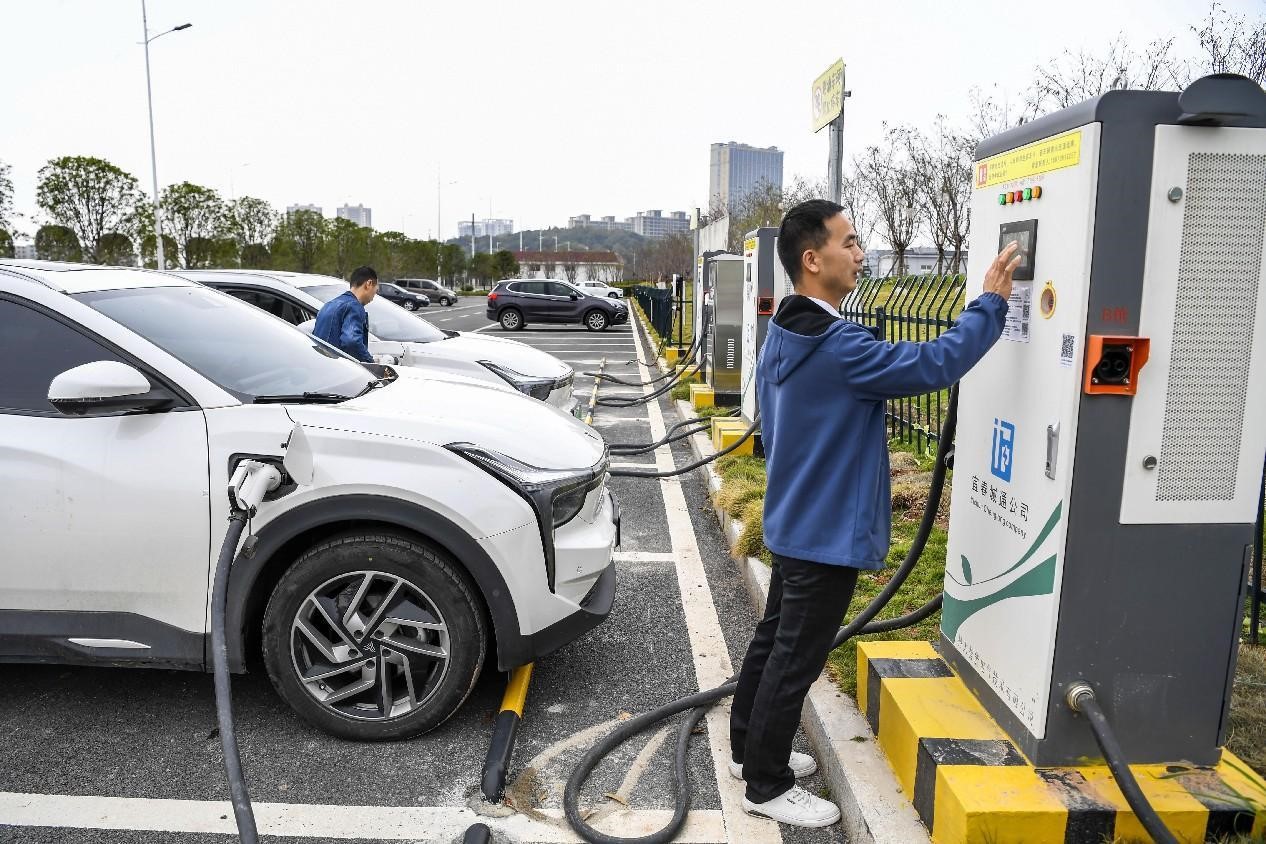China works vigorously to advance green transportation
By 2030, no less than 70 percent of travel will be conducted through environmentally friendly means in cities with permanent populations of one million or more, said an action plan for carbon dioxide peaking issued by China's State Council.
Over the recent years, cities across the country have made intensive efforts to advance green transportation, adopting various measures to improve the green mobility experience of citizens and contribute to low-carbon development.

A car of an elevated rubber-tyred metro line and a new energy vehicle run in Bishan district, southwest China's Chongqing municipality. (People's Daily Online/Hu Yuejian)
For instance, they have paved bicycle-only lanes, widely put new energy buses into use and built tightly woven rail transit networks.
Beijing's first bicycle-only lane opened to traffic on May 31, 2019. It extends 6.5 kilometers from Huilongguan, a densely populated community in the northern part of the city, to Houchangcun Road, where a large number of high-tech companies are located. It has become a prioritized choice of commuting by bicycle for many citizens.
A man surnamed Zhang works for an internet company in Beijing. Cycling is his hobby.
"It took me at least an hour to drive to my office if I was caught up in traffic jams, but now I can ride to my office in around 30 minutes," he told People's Daily, wearing a helmet, a pair of cycling gloves and a cycling suit, which made him look like a very professional rider.
According to Liu Shuang, head of the bicycle-only lane managing center of Beijing's Changping district, around 11,600 people ride on the lane every day. As of the end of November this year, a total of 6.49 million trips had been made on the lane, with an average ridership of 4,000 to 9,000 per day.
"Bike riding saves 32 percent and 50 percent of the commuting time respectively compared with driving and taking buses, and it cuts carbon emission by over 1,500 tons per year," Liu said.
Currently, the bike-only lane in Beijing is undergoing expansion projects, Liu said. Upon completion, it will form a "slow transport" network with a broader coverage linking Changping, Haidian and Xicheng districts, and offer citizens with more choices of low-carbon and efficient transportation.

People ride on a bike lane in Lucheng district, Wenzhou, east China's Zhejiang province, June 26, 2022. (People's Daily Online/Su Qiaojiang)
To put into practice the philosophy of green transportation, Hefei, capital of east China's Anhui province has vigorously promoted new energy buses over the recent years.
An official with the passenger transport management office of the city's municipal transport department told People's Daily that all new and updated buses joining the city's bus fleet since 2018 are pure electric.
As of the end of 2020, all operating buses running in downtown Hefei were powered by new energy, the official added.
Statistics showed that currently there are 3,440 new energy buses in operation in Hefei, or 98 percent of the city's bus fleet.
Yang Haibing, general manager of the technical management department of Hefei Public Transport Group Co., Ltd., said that buses in the city reduced 155,700 tons of carbon dioxide emission in 2021, which was equivalent to planting 8.5 million trees based on the criteria that a tree absorbs 18.3 kilograms of carbon dioxide a year.
Apart from optimizing the energy structure of the bus fleet, Hefei also worked to upgrade its bus network with digital means.

A man charges an electric vehicle in a parking lot in Fengxin county, Yichun, east China's Jiangxi province, Nov. 21, 2022. (People's Daily Online/Zhou Liang)
In an intelligent bus dispatching center of the city, there is a huge screen that displays real-time information about all the bus stations, passenger volume and operating vehicles in the city.
"By analyzing the data, we are able to manage our capacity in a targeted manner, which brings the maximum convenience to citizens and contributes to the reduction of carbon emission," said Bu Zexiang, head of the operation management department of the company.
Urban rail transit is favored by citizens, too. Chengdu, southwest China's Sichuan province, has opened 13 rail transit routes with 558 kilometers of operation in total. According to statistics, the city's urban rail transit network reported a total of 9 billion passenger trips as of August this year, and over 60 percent of residents opted for public transport.
Besides, Chengdu's metro system has also worked to better integrate rail transit with bus services. It launched five tourism metro routes and connected over 20 bus routes to the metro network. In addition, it also improved the connection between metro stations and their surrounding transport facilities and commercial areas, to practically optimize the mobility experience of citizens.
Photos
Related Stories
- Chinese vice premier stresses green, low-carbon energy transition
- China optimizes COVID-19 response in transportation sector
- "City of future" fosters low-carbon growth for green development
- Green, efficient transport modes benefit citizens across China
- China's Ningxia taps desert resources to realize green development
Copyright © 2022 People's Daily Online. All Rights Reserved.









